Last Chance to Catch NYC's Holiday Notalgia Train
We met the voices of the NYC subway on our nostalgia ride this weekend!


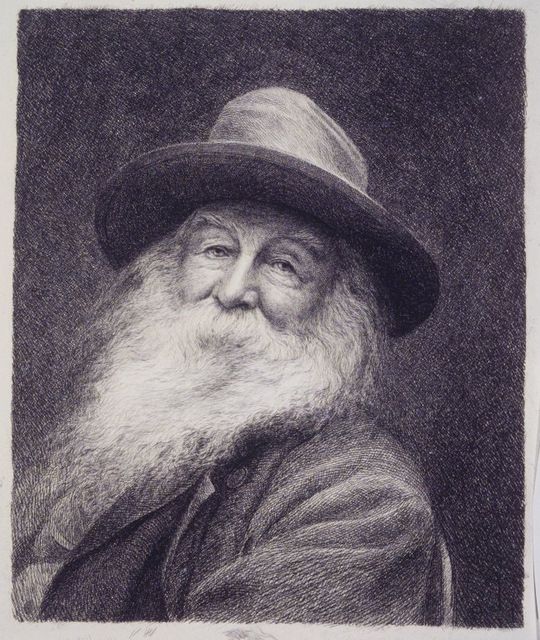
Image by Thomas Johnson from Brooklyn Museum in Wikimedia Commons
It’s the bicentennial of Walt Whitman’s birthday tomorrow, May 31st, and New York City is in a flurry of celebration. Though Whitman was born on Long Island, Brooklyn is where he came into his own as a poet. The poet lived and worked part of his life in what was then the independent city of Brooklyn and the borough permeates much of his work. Although more than a century of transformations have significantly changed the Brooklyn that Whitman knew, if one looks close enough it is still possible to see remnants of Whitman’s time.
It is also officially “International Whitman Week” where you can check out then exhibition at The Grolier Club “Poet of the Body: New York’s Walt Whitman” (where our photo of Whitman’s home at 99 Ryerson Street is on display), participate in the 16th annual “Song of Myself Marathon” at the Granite Prospect in Prospect Park, grab the copy of the Walt Whitman Bicentennial publications from the Walt Whitman Initiative (PDF version here), watch a film about a mass reading of Crossing Brooklyn Ferry, a trip to Walt Whitman’s birthplace in Huntington, and more. Check out the other events and tours connected with International Whitman Week here and continue on for a self-guided tour of places where you can pay tribute to Walt Whitman in Brooklyn:
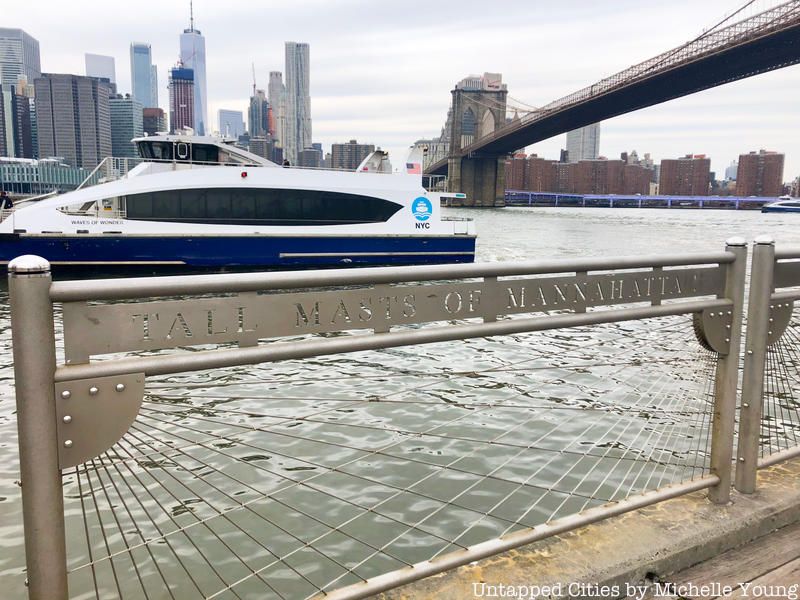
No person has ever described the commute of a typical Brooklynite as beautifully as Walt Whitman in his poem “Crossing Brooklyn Ferry.” In this poem, the poet describes the experience of crossing the East River from Brooklyn to Manhattan just before sunset. “Stand up, tall masts of Mannahatta!—stand up, beautiful hills of Brooklyn,” the section we photographed above proclaims with the skyline of Lower Manhattan in the distance and the modern NYC Ferry right in the background. Fitting, as Whitman would have taken the ferry between Brooklyn and Manhattan, then entirely the City of New York, as the Brooklyn Bridge would not have been built.
Although the original ferry landing is now part of Brooklyn Bridge Park, the park itself commemorates it’s native son with an inscription of the poem along its railings. Fulton Ferry Landing is home to food vendors and Bargemusic, a classical music hall housed on a floating barge at the foot of the Brooklyn Bridge. You can discover more about the Brooklyn Bridge in our upcoming Secrets of Brooklyn Bridge tour.
The Secrets of Brooklyn Bridge Walking Tour
 99 Ryerson Street, in the center, was once the home of Walt Whitman during a critical time period of his life
99 Ryerson Street, in the center, was once the home of Walt Whitman during a critical time period of his life
Less than two blocks from the Brooklyn Navy Yard, on a street lined with rowhouses of many sizes and styles, sits an unassuming, mundane aluminum-sided townhouse that hides a rich history. 99 Ryerson Street was a pivotal residence of Walt Whitman, whose ground-breaking poetry collection Leaves of Grass was published while he lived here with his brother and parents from 1855 to 1856. While living at this address, he also worked on the second edition of Leaves of Grass, which includes the first version of the poem “Crossing Brooklyn Ferry,” one of Whitman’s most well-known works. It is also the last remaining home of the poet in New York City – all the rest have been demolished.
Numerous attempts to landmark 99 Ryerson Street have failed, despite successful landmarking of other sites affiliated with LGBTQ figures. Whitman lived on the second floor in the front of the house (a third floor was added in about 1891) and in addition to construction work, he pursued his literary dreams preparing for the publication of his book and doing freelance writing. “That to me is the core of it,” says Brad Vogel, the Executive Director of the New York Preservation Archive Project who founded the Coalition to Save Walt Whitman’s House. “Walt Whitman looked at Brooklyn and looked out at the world from that second story space. This is where he burst meteorically onto the scene as a poet.”
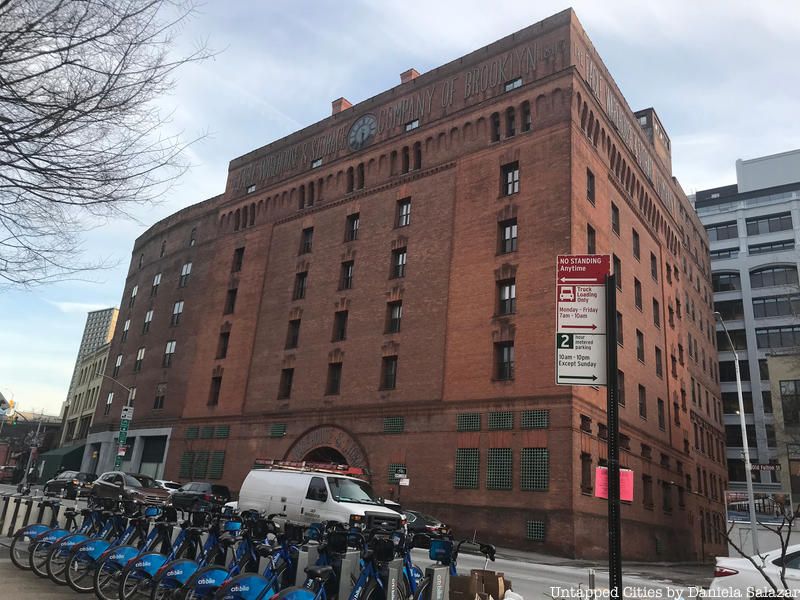
Beginning at the original Fulton Ferry landing, Old Fulton Street was a familiar haunt for Walt Whitman. Not only was this where the ferry left him upon his return from Manhattan, it was also home to the Brooklyn Daily Eagle, the newspaper Walt Whitman edited for two years, from 1846 to 1848. Originally known as Ferry Road, for a very long time Old Fulton Street provided THE iconic view of Brooklyn proceeding from the Ferry landing. The original Daily Eagle building no longer stands, in its place are the Eagle Warehouse condominiums which has a plaque on its facade dedicated to the poet.
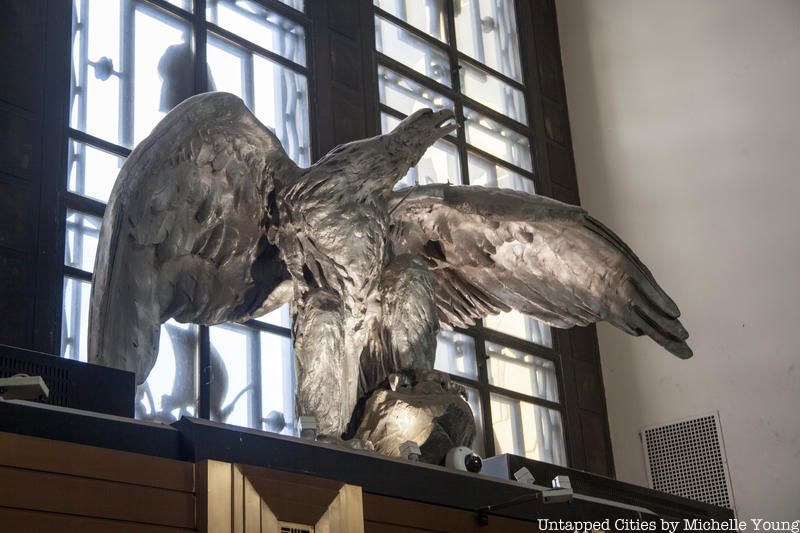
In addition, you can find the original eagle sculpture that once stood above the doorway to the Brooklyn Daily Eagle headquarters above the entrance of the Brooklyn Library at Grand Army Plaza.
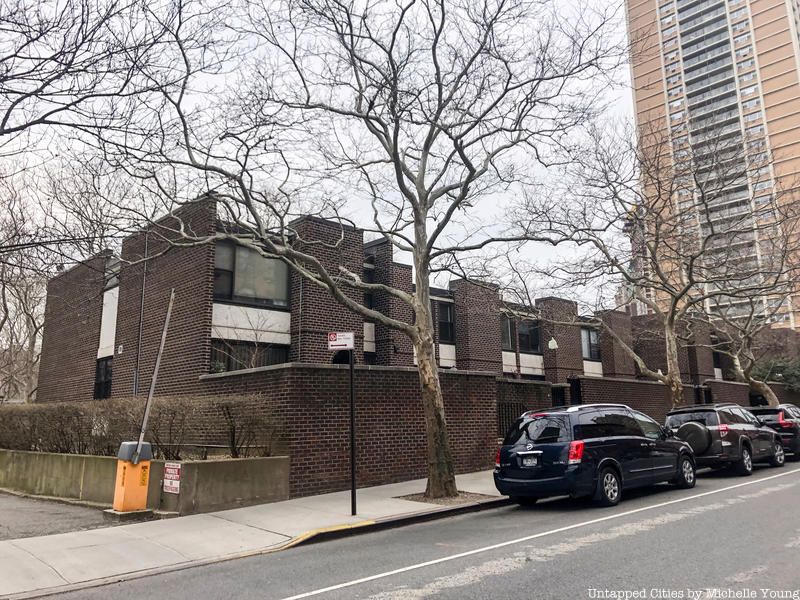
Whitman would have walked frequently to the Rome Brothers printing shop in Brooklyn Heights where he had convinced them to print Leaves of Grass if he set the type himself. The Rome Brothers printing shop has been long demolished and has been replaced by the Whitman Close Co-Ops at 75 Henry Street . According to the author in this post, the gray bricks which surround the planter in the open space area of the housing development were salvaged from the original Rome Brothers building.
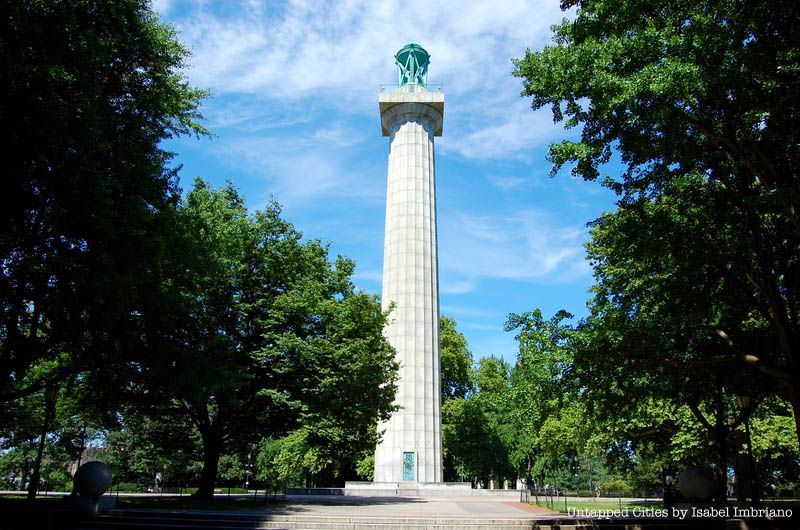
Brooklyn’s first public park, Fort Greene Park was first opened in 1848 with the name of Washington Park. Walt Whitman played no small role in this event. As the editor of the Brooklyn Daily Eagle (the most read newspaper in Brooklyn at the time), he used his editor’s pen to make appeals for the construction of a public green space in Brooklyn.
Redesigned in the 1860’s by Frederick Law Olmsted and Calvert Vaux (the same designers of Central Park and Prospect Park) this hilltop park is the cornerstone of the Brooklyn neighborhood that also bears its name. The park is also home to the Prison Ship Martyrs’ Monument, an 149 foot Doric column that commemorates the more than 11,000 American prisoners of war who died as captives aboard British ships during the American Revolution. The inside of the monument is opened up on rare occasions, and you can peer inside through our photographs here.
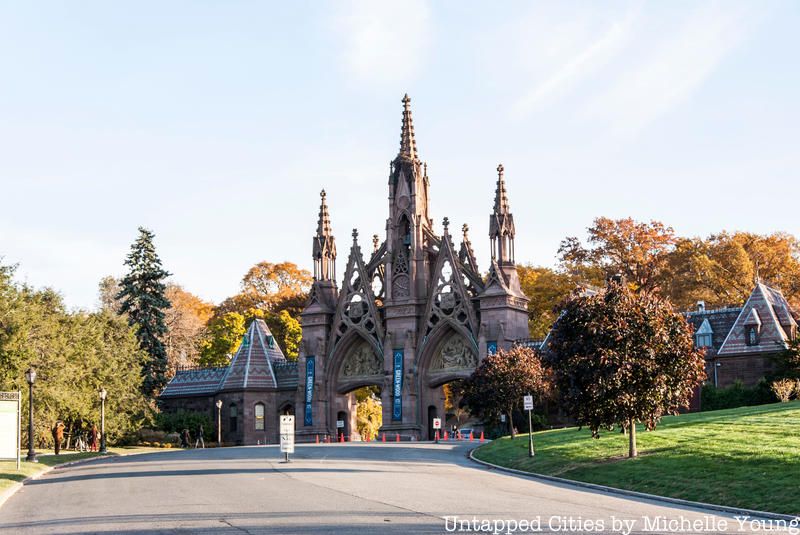
478 acres of green hills, centuries old trees, picturesque ponds in the heart of South Brooklyn. Green-Wood Cemetery is home to many famous “residents,” including Leonard Bernstein, Boss Tweed and Jean-Michel Basquiat. Designated a National Historic Landmark, the cemetery was founded in 1838 as one of the first rural cemeteries in the United States.
The beauty of its landscape and surroundings allowed it to quickly become a popular tourist destination. In the 19th century anyone who was anyone in New York society was buried at Green-Wood. In his journalistic writings, Walt Whitman wrote about Green-Wood several times and shows a profound familiarity and affinity for this once popular national destination.
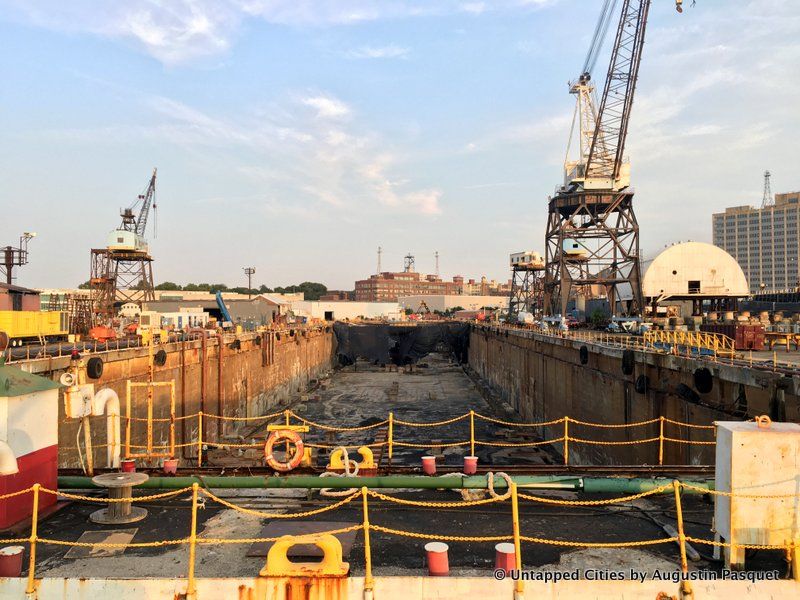
Established in 1801, and known then as the New York Naval Shipyard, the Brooklyn Navy Yard operated for nearly two centuries as the center of American naval shipbuilding. Walt Whitman would have been extremely familiar with the Navy Yard as his home at 99 Ryerson Street was located in the abutting Wallabout neighborhood. The Navy Yard not only employed many of the residents of its surrounding neighborhoods, it also served as an area for social gatherings, or Sunday afternoon family strolls.
The Navy Yard’s buildings includes a variety architectural styles, dating from the 19th century onward. Closed in 1966, the current Navy Yard houses an industrial park and a center. Stop by BLDG 92, where one can learn about the history of the Yard and its surrounding neighborhoods for free.
Next, check out 7 spots in NYC where you can drink where the Beat generation writers did.
This article was written by Alexandra Hinojosa and Michelle Young.
Subscribe to our newsletter